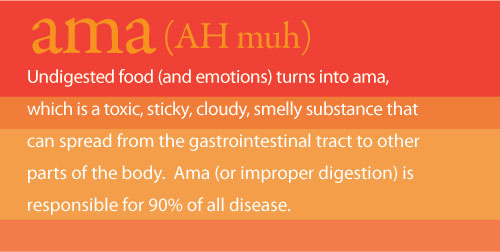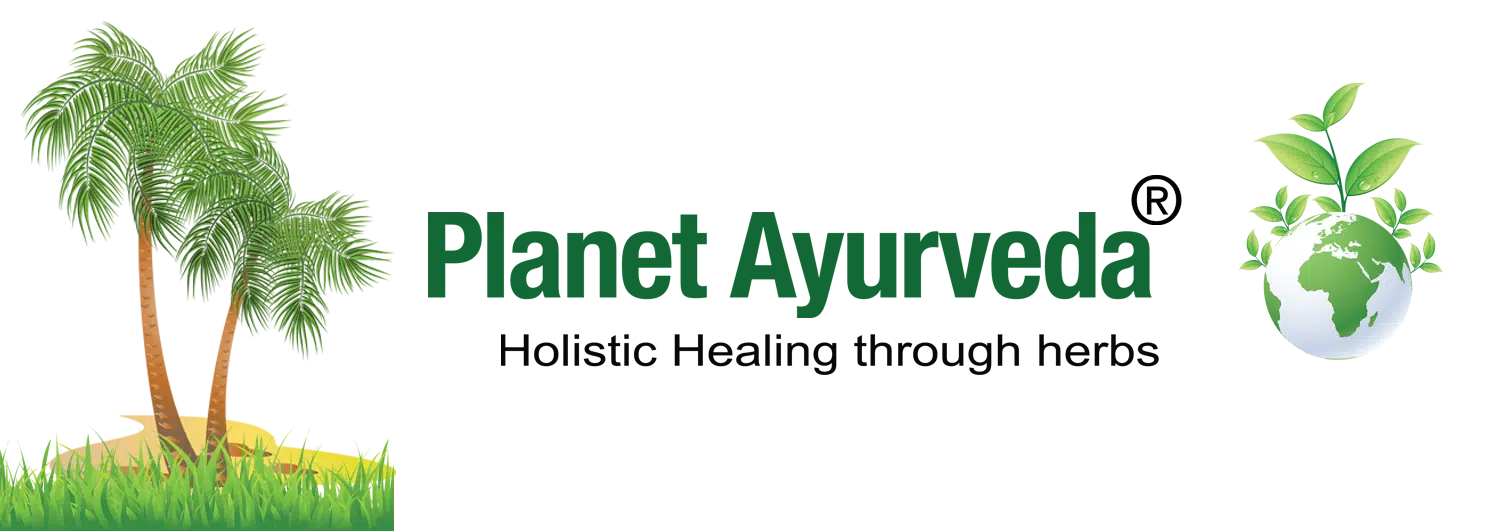Ama Dosha – The Root Cause of Many Diseases
Ama is an important concept in the field of Ayurveda. It is important to illustrate the causes of various diseases and to find out the various treatments and modifications to eliminate the several disorders effectively. It is the thing which is caused due to incomplete transformation processes in the body of the living organisms. The term “Ama” in Sanskrit means undigested or incomplete. It plays a pivotal role for the development of pathological science.
Ama develops from the undigested harmful materials, which block the various channels in the human body. These channels include lymphatic system, blood vessels, intestines, genitor-urinary tract, gastro intestinal tract and many others. Other important non physical channels are the nadis. Through the nadis, the energy flow takes place. The toxic ama accumulates in the body, whenever the body faces certain weakness. This gives rise to severe diseases.

Ama Causes – Major Causes of Production of Ama Dosha
Some of the Major Causes of Ama are Given Below:
Accumulation of Toxic Waste Materials
This process is also known as Mala Sanchaya in Ayurveda. During the process of metabolism, agni leads to transformation of food products into energy. And, it also leads to the production of certain toxic substances. They are known as the kleda. The excess of kleda must be excreted out of the body to maintain a healthy living. When the process of excretion cannot take place properly, accumulation of toxic waste materials takes place. And, this gives rise to the production of Ama.
Microbial Infections
When the infection is caused due to the exposure to the micro organisms, they give rise to several toxins, known as Ama. This is known as the Krimi visha.
Interaction Among the 3 Doshas
The process, also called Dosha Sammurcchana produce harmful substances called ama. The amalgamation of two or more doshas does not neutralize each other’s impact and characteristics. Instead it gives rise to production of Ama.
Agnimandya
Agnimandya is also known as the low activity of digestive fire, which is important for effective metabolism of food. If the digestive power fails to work properly, oxins get accumulated in the body, which make the rate of absorption slow and sluggish. Thus, they remain unabsorbed and lead to several severe diseases.
Ama Properties
- Ama is in the form of undigested materials.
- It is heterogeneous with foul smell. It is experienced when it combines with urine, sweat, sputum and other forms of excretory products of the human body.
- It is sticky in nature and results in laziness and lethargy to a huge extent.
Ama Signs and Symptoms
- Obstruction: Obstruction or sotorodha occurs in various channels of the body. This includes intestines, gastro-intestinal tract, respiratory tract, urino genital tract, fallopian tubes and blood vessels.
- Weakness, lethargy and fatigue
- Disturbances in transmission of nerve impulses
- Diabetes, Obesity, bloating, mucous in the stool, loss of appetite, indigestion and other metabolic disorders
- Pain, ache
- Sticky thick tongue
- Foul odor
- High level of triglyceride deposition n the arteries leading to atherosclerosis, high blood sugar
- Depression
- Leukocytopenia
- Excess number of blood platelet count in the body
- Gout, arthritis, deposition of oxalates
- Bacterial infection
- Glaucoma
- Frequent allergic reactions
- Problem in thinking and decision making
Ama Treatment – Home and Herbal Treatment for Ama
The first and foremost treatment of Ama is fasting. In Sanskrit, it is known as langhana. Fasting till normal agni is established is essential for the treatment of ama. The normal agni helps in reducing the various obstruction sin the channels and routes and helps in digesting the ama and other signs and symptoms, which are caused due to ama are eventually reduced.
Besides, dry sudation therapy is also beneficial. It also provides relief from the blockages in the channels and relieves aches, pain, inflammation and other disorders effectively. There are also several herbs, which help in treating the problem of Ama effectively. These herbs include ginger, garlic, castor, aloe vera, guduchi, kuchala, cumin, bhallataka, black pepper and several others.
A particular diet must also be maintained to get rid of ama. The Anti ama diet includes the food items, which emphasize bitter, pungent and astringent characteristics.
Thus, Ama, the concept in Ayurveda must be treated very strictly in order to lead a healthy life.
